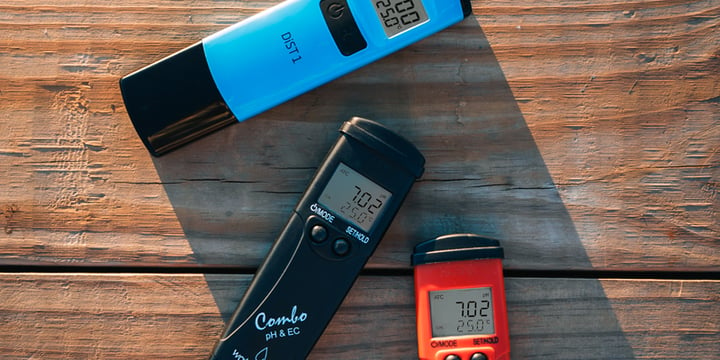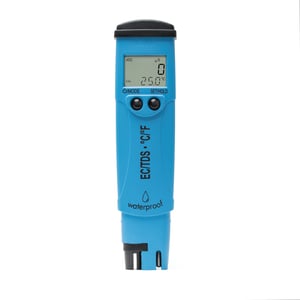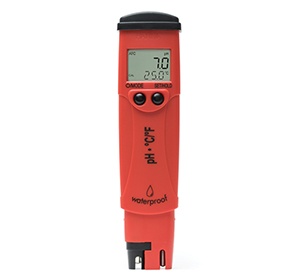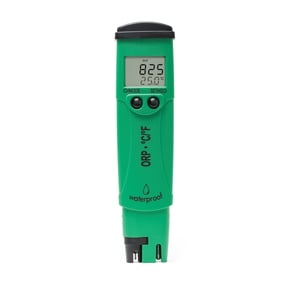
When you're first embarking on a new endeavor, there a lot of unexpected things that pop up along the way. From cheese making to pool testing and beyond, your new hobby or business may come with some additional tasks that you didn't know to plan for. We're here to make things a little bit easier for the beginners when it comes to caring for your new best friend - your pH tester.
1. Use a small glass jar to store your buffer
Successful calibration depends on keeping the buffer fresh. When calibrating a pH meter the buffer should never be poured back in the bottle. This could contaminate the bottle, rendering your buffer useless. To keep the buffer clean and accurate, pour some into a small glass container, like a baby food jar, and use that to calibrate your meter. You can use the poured buffer for about a week. After that, wash the jar and replace it with fresh solution.
Hanna Tip: We also offers the HI70007P (25 sachets of pH 7.01) and the HI77400P (5 sachets each of pH 7.01 and 4.01), which are convenient, single use buffers.
2. Use the proper storage solution
If you're trying to decide whether to purchase a storage solution or to store your electrode in water, it is always best to use storage solution. If a solution, such as Electrode Storage Solution HI70300L, is not available then use pH 4 buffer or, in a real pinch, pH 7 buffer. Never store in tap or purified water! Tap and purified waters are very low in salt, relative to the solution inside the electrode. The imbalance will cause the water to move from low concentration (water) to high (inside electrode) by osmosis. This affects the concentration of salt inside the electrode, and thus affects the life of your pH electrode.
Hanna Tip: It's okay to place the electrode in water for a short period of time to rinse off a solution. Just don't store the electrode in it.
3. Maintain a hydrated electrode
Maintaining a hydrated electrode assures you that the condition will always remain the same. To hydrate your electrode either place the meter upright in a glass with storage solution, or place a small piece of sponge (about a 1/4” cube cut from a new kitchen sponge) in the cap of your tester and wet the sponge with the solution.
The main reason you want to keep the electrode well-hydrated is that it keeps the junction wet. There's an area inside of every pH electrode from which salt (in either a liquid or gel) migrates to the outside and seeps in the solution that is being tested. Anything that prevents this will cause readings to drift (and therefore be unstable). Ensuring that the junction is wet and doesn't form a precipitate at the outer surface will keep your meter working newer, longer.
4. Clean the electrode periodically
Preferably you will want to use a cleaning solution such as General Purpose Cleaning Solution HI7061M, but if you don't have any on hand, then a couple of drops of dishwasher detergent in a glass of water will do. Using a soft toothbrush gently clean your electrode ensures that any growth on the sensor - which will cause inaccurate readings - is removed. In most cases you can calibrate the error out, but eventually the growth will affect the readings regardless of calibration.
Hanna Tip: After cleaning the meter it must be re-calibrated!
If a probe has a hairline crack or a break on the inside, the meter will always read 7 regardless of the solution. If you are only performing a single point calibration, then we suggest that you periodically check the electrode by testing it in vinegar or orange juice. Because they are acidic, you should get a reading of pH 4 or less. If the reading is over pH 4, then you likely have a broken probe.
5. Replace electrodes when it's time
On a final note, it's important to remember that pH electrodes don't last forever; the typical lifespan is 1-2 years, depending on what they're used for and how often. A meter might still read outside of this time frame, but the accuracy could be off. How often you change your probe will depend on how accurate you need or want your reading to be.
Whether you are testing the pH, EC, TDS or ORP of your aquarium, the nutrient solution of your indoor garden, or the water in your swimming pool (the home-user, maintenance team, or installation business), Hanna Instruments carries the a device suited to your needs; we make several testers for measuring multiple parameters. Here are our most popular ones:
pH Testers
pHep®4 pH/Temperature Tester - HI98127
pHep®5 pH/Temperature Tester - HI98128

EC/TDS Testers
DiST® 5 EC/TDS/Temperature Tester - HI98311
DiST® 6 EC/TDS/Temperature Tester - HI98312
ORP Testers
ORP/Temperature Tester - HI98120

Combos Testers
(A combination of a pHep 5 with one of the above)
Combo pH/Conductivity/TDS Tester (Low Range) - HI98129
Combo pH/Conductivity/TDS Tester (High Range) - HI98130
pH/ORP/Temperature Combo Tester - HI98121
That's why we've dedicated our blog as a helpful resource for you to use! Catch up on the latest products, explore industry trends, discover testing tips, learn how to improve results, and more. Got questions? Email sales@hannainst.com.




